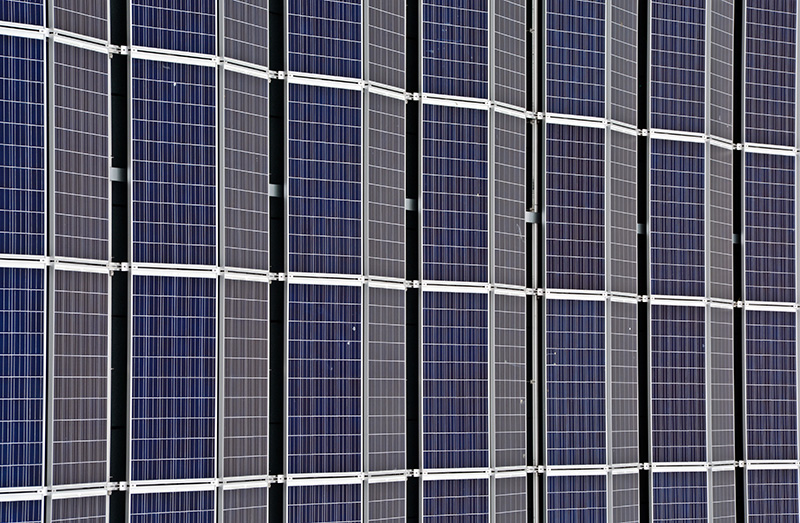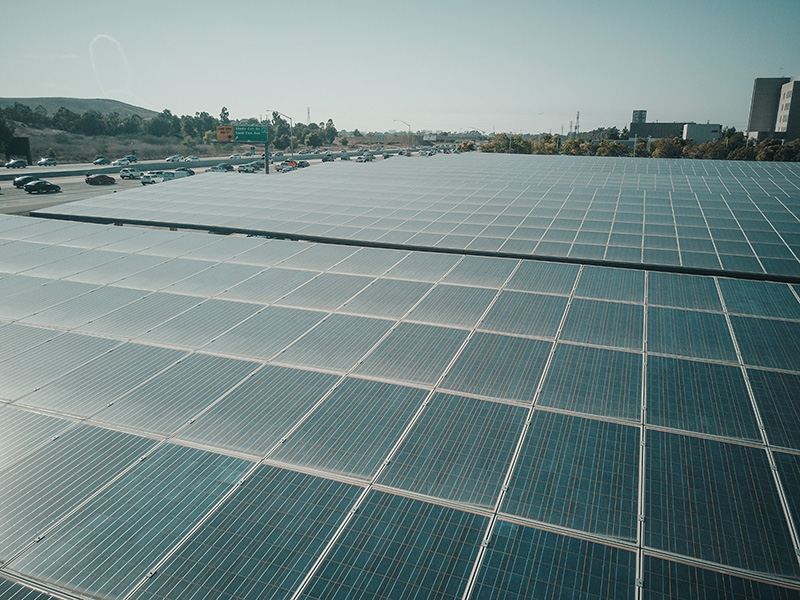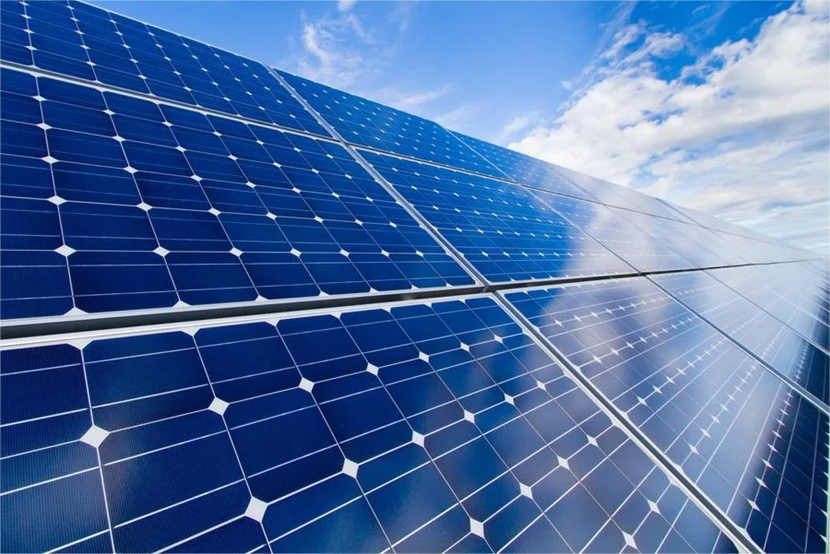Description
Solar panels, or photovoltaic (PV) panels, transform sunlight into electricity using the photovoltaic effect. When sunlight hits these panels, it excites electrons in the silicon cells, creating an electric current. This current, initially direct current (DC), is then converted to alternating current (AC) through an inverter, ready for household use. Essentially, solar panels harness the sun's energy to produce sustainable electricity.
Basic Principles of Solar Energy
The Sun as an Energy Source
The
Sun, a gigantic ball of hot gases primarily composed of hydrogen and helium, acts as the primary energy powerhouse for our planet. Its gravitational might allows it to continually fuse hydrogen atoms into helium, releasing a phenomenal amount of energy. This energy, radiated as sunlight, journeys approximately 93 million miles to touch Earth.
Each day, the Earth receives about 174 petawatts of solar radiation in its upper atmosphere. Roughly one-third of this is reflected back into space, while the remaining is absorbed by oceans, clouds, and landmasses. This solar energy not only drives our climate and weather patterns but also stands as the potential power source for photovoltaic technology.
How Photons Become Electricity
When sunlight, packed with tiny energy parcels called photons, interacts with the surface of a solar panel, a riveting process of energy conversion begins. Here's a detailed breakdown:
Solar Cell Structure
Solar panels are an assembly of numerous solar cells, predominantly crafted from silicon. Each of these cells consists of two distinct layers. The top layer is doped with phosphorous, endowing it with additional electrons and a negative charge. Conversely, the bottom layer, infused with boron, has fewer electrons, making it positively charged. This specific configuration results in an electric field between these layers.
Photovoltaic Effect
As a photon from the sun's rays collides with a solar cell, it can deliver enough energy to dislodge an electron from its bond within the silicon structure. The electric field mentioned earlier propels these freed electrons towards the front of the solar cell, causing an electrical deviation. When connected in a circuit, this electrical imbalance prompts electrons to flow, producing electricity.
This direct transformation of light into electric current is termed the
photovoltaic effect, the cornerstone of solar panel operation.
Components of a Solar Panel
Solar Cells: The Building Blocks
Solar cells stand as the heartbeat of every solar panel. These cells directly convert sunlight into electricity through the
photovoltaic effect. Each solar cell generates a small amount of electricity, but when combined in large numbers in a panel, they collectively produce enough electricity to power homes, businesses, and even entire communities.
Types of Solar Cells: Monocrystalline, Polycrystalline, and Thin-Film
Monocrystalline Solar Cells:
These are made from a single, pure silicon crystal. Recognizable by their even coloring and uniform appearance, they are considered the most efficient. This efficiency comes from the high purity of the silicon used. However, they are often more expensive due to the complex manufacturing process that wastes a considerable amount of silicon.
Polycrystalline Solar Cells:
Also known as multi-crystalline cells, they are made from melted and recrystallized silicon. Unlike their monocrystalline counterparts, they have a blueish hue due to the multiple crystals they contain. They are slightly less efficient and less expensive.
Thin-Film Solar Cells:
These cells differ significantly from the previous two. Manufacturers place layers of photovoltaic material onto a substrate. They're more flexible and can be integrated into different applications like tiles, shingles, or building facades. Their efficiency is generally lower, but they are cheaper and more versatile in certain applications.
The Role of the Inverter
After solar cells generate electricity, it's in the form of direct current (DC). However, most homes and businesses operate on alternating current (AC). This is where the inverter steps in. It takes the DC produced by the solar cells and converts it into AC, making it usable for everyday appliances and systems. The
inverter is a critical component, ensuring that the power harvested from the sun seamlessly integrates into our daily lives. It also allows any excess electricity to be sent back to the grid, turning many homes with solar panels into mini power stations.
The Photovoltaic Effect
What is the Photovoltaic Effect?
The
photovoltaic effect is a remarkable phenomenon wherein material can generate electricity when exposed to light. In essence, it's the process of converting light (photons) into electrical voltage. This effect is the foundation upon which solar cells operate, enabling the direct conversion of sunlight into electric energy.
How Semiconductors Play a Role
Semiconductors serve as the linchpin in the photovoltaic effect. Unlike metals which have a plethora of free electrons or insulators which barely have any, semiconductors strike a balance. Depending on the conditions, they can either conduct electricity or insulate against it.
In the context of solar cells, silicon is the most commonly used semiconductor. When light strikes the silicon solar cell, it can provide enough energy to break the bond of an electron from the silicon atom. This newly freed electron is then available for conduction, thus generating electricity. The inherent properties of
semiconductors, combined with their designed structure, facilitate this electron liberation and collection.
From Photons to Electrons: The Energy Conversion Process
Every beam of sunlight contains tiny packets of energy known as photons. When these photons make contact with the surface of a solar cell, an enthralling energy conversion takes place:
- Photon Collision: As photons bombard the surface of the solar cell, their energy gets transferred to electrons in the semiconductor.
- Electron Excitation: This transferred energy is enough to excite the electrons, knocking them free from their atomic bonds.
- Electric Field Direction: Thanks to the built-in electric field of the solar cell, these freed electrons move in a particular direction, creating a flow or current.
- Current Collection: The cell's design ensures that this current gets directed to the edges of the panel, where it can be harvested and used.
This entire sequence, from the initial photon collision to the harvesting of electric current, epitomizes the photovoltaic effect's brilliance and its pivotal role in solar technology.
Installation and Efficiency
Choosing the Right Location
Selecting an
optimal location for solar panels significantly impacts their performance. It's not just about placing them where sunlight is abundant; one must also consider angles, shading, and orientation. In the Northern Hemisphere, solar panels typically face south to capture the most sunlight. Conversely, in the Southern Hemisphere, a northward orientation is best. Additionally, the angle at which the panels are set can be adjusted seasonally to maximize exposure to the sun's rays. It's crucial to avoid areas with significant shading, as even a small shadow can greatly reduce a panel's electricity production.
Factors Affecting Solar Panel Efficiency
Several factors influence how efficiently a solar panel can convert sunlight into electricity:
- Temperature: While sunlight is essential, solar panels actually decrease in efficiency as they get hotter. Cooler, sunny climates often yield the best energy production rates.
- Dirt and Debris: Dust, bird droppings, and other debris can block sunlight, reducing a panel's output. Regular cleaning can help mitigate this.
- Age of the Panel: Like most technologies, solar panels degrade over time. A decade-old solar panel might not produce as much energy as a brand-new one.
- Material Quality: The materials used in the solar cells determine efficiency. For instance, monocrystalline cells generally outperform polycrystalline cells in direct sunlight.
Maximizing Energy Production
To squeeze the most energy out of a solar installation, several strategies can be employed:
- Solar Trackers: These are mechanical systems that tilt and turn solar panels to follow the sun throughout the day, ensuring maximum sunlight exposure.
- Regular Maintenance: Regular check-ups can identify potential issues like loose connections, shading problems, or wear and tear.
- Optimizers and Microinverters: These devices can improve energy conversion rates and allow panels to operate independently, ensuring that poor performance in one doesn't drag down the rest.
- Upgrading Technology: As solar technologyprogresses, newer panels or additions can be more efficient. Periodically upgrading components can boost overall energy yield.
Advancements in Photovoltaic Technology
The solar energy sector has witnessed remarkable progress over the past few decades. Innovations in materials, design, and manufacturing techniques have paved the way for more efficient, cost-effective, and flexible solar panels. With industry leaders, like
Tongwei, pushing boundaries, solar energy is becoming more accessible and sustainable for future generations.
New Materials and Designs
In the quest for greater efficiency and flexibility, researchers and companies are exploring beyond traditional silicon-based cells.
- Perovskite Solar Cells: These are a new class of solar cells that have shown great promise, often characterized by their high efficiency and potential for lower production costs compared to silicon cells. Their adaptability means they can be used in a wider variety of applications, from windows to flexible surfaces.
- Bifacial Solar Panels: Unlike traditional solar panels that only capture sunlight from one side, bifacial panels can collect light from both their front and back sides, significantly boosting their efficiency. Companies like Tongwei are investing heavily in refining this technology.
- Flexible Solar Panels: Constructed from innovative materials, these panels are lightweight, bendable, and can be integrated into various surfaces, making them ideal for diverse applications.
Improving Efficiency and Reducing Costs
While the initial costs of solar panels have been a hurdle for many, the tides are changing. As of 2021,
the cost of solar panels has dropped by over 80% in the last decade. Companies like Tongwei are at the forefront of driving these costs down while simultaneously enhancing the efficiency of their panels. By focusing on R&D and optimizing manufacturing processes, they are making solar energy a more competitive alternative to fossil fuels.
The Future of Solar Energy
The horizon looks bright for solar energy:
- Integration with Smart Grids: As smart grid technology evolves, solar panels will not just be sources of power but also integral parts of an intelligent energy network.
- Energy Storage Solutions: To truly unlock solar's potential, advancements in energy storage – like more efficient batteries – will be pivotal. This ensures power availability even when the sun isn't shining.
- Global Expansion: With the lowering costs and rising efficiency, solar energy adoption is predicted to rise rapidly worldwide, especially in developing nations.
Tongwei, among other industry leaders, is committed to driving these advancements, ensuring that solar energy remains at the vanguard of renewable energy solutions.
Environmental and Economic Benefits
Harnessing the sun's energy through solar panels not only provides a sustainable power source but also ushers in myriad environmental and economic advantages. As the world grapples with the dual challenges of climate change and economic uncertainties, solar energy stands out as a beacon of hope.
Reducing Carbon Footprint with Solar Energy
Transitioning to solar energy has the immediate benefit of cutting down
carbon emissions. Traditional energy generation methods, primarily reliant on fossil fuels, have been the predominant contributors to greenhouse gas emissions. In contrast, the entire lifecycle of a solar panel, from its production to its operation, results in minimal emissions.
The International Energy Agency mentions that solar power has the potential to reduce carbon dioxide emissions by over six billion tonnes by 2050. Adopting solar energy, therefore, plays a pivotal role in mitigating the detrimental impacts of climate change, preserving ecosystems, and ensuring a healthier planet for future generations. Moreover, the indirect consequences of burning fossil fuels, such as habitat destruction and water pollution, can be substantially reduced with widespread solar adoption.
Cost Savings and Economic Advantages
The economic incentives of integrating solar power into our energy matrix are equally compelling. While the upfront costs associated with solar installations might be perceived as high, the long-term financial gains are substantial. Over a solar panel's lifetime, which typically spans 25-30 years, homeowners and businesses can anticipate significant reductions in their electricity bills. In some regions, these savings can amount to an average of $20,000 over two decades.
Furthermore, the solar industry has been a substantial contributor to job markets globally. In the U.S., for instance, the solar industry accounts for twice as many jobs as the coal industry. This growth trajectory is expected to persist as more nations pivot towards cleaner energy sources. Besides, solar energy fosters energy independence for nations, decreasing reliance on volatile fossil fuel markets and enhancing national energy security. This autonomy not only translates to consistent energy prices but also fortifies the economy against external shocks. Homes equipped with solar energy solutions also tend to fetch higher market prices, further solidifying the financial benefits of this green technology.



